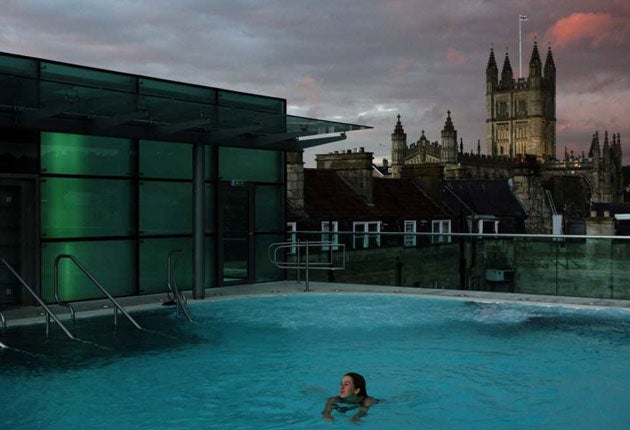Will Unesco pour cold water on Bath's riverside project?
A new development may threaten the city's World Heritage status, says Ian White

Bath, with its grand Georgian buildings and Roman ruins, is the kind of place where phrases such as "urban regeneration" tend to be greeted with little enthusiasm.
Nevertheless, the past few years have seen the ultra-modern Thermae Bath Spa complex push its way up through the city centre rooftops to near unanimous approval, and the new Southgate shopping centre, currently under construction, improve on an older eyesore – despite its fauxGeorgian pre-fab façades.
But another planning project, which has been granted outline approval and detailed planning consent by Bath and North East Somerset Council, is causing more controversy.
The Western Riverside development, if it goes ahead as planned, will include 2,300 homes (more than 90 per cent of which will be one or two-bedroom flats) and amenities including shops, parks, restaurants and a school, all spread across 75 acres of derelict, former industrial land.
The most prominent features of the planned development are three pavilion riverside "object" buildings, although the tallest of these, at nine storeys, was withdrawn from the detailed planning stage at the 11th hour by developer Crest Nicholson, with a view to it being reintroduced at some time in the future.
"Object" is exactly what some interested parties have done, most notably Unesco (the United Nations Educational and Scientific and Cultural Organisation). Its World Heritage Committee was put on a state of high alert once it heard of the plans. Now there are fears that Bath's status as a World Heritage City could be under threat.
Although the new development would be a mile away from Bath's showpiece Georgian crescents and Roman archaeology, it could compromise what Unesco calls Bath's "outstanding universal values". Bath is the only entire city in the UK to be listed as a World Heritage Site. Unesco describes it as "a city that is harmonious and logical, in concord with its natural environment and extremely beautiful".
The World Heritage Committee's "Statement of Outstanding Universal Values" for Bath refers to the way in which the 18th-century architect John Wood the Elder, together with philanthropist Ralph Allen, builder Thomas Baldwin and others, were responsible for not only Bath's landmark crescents and streets (inspired by the 16th-century Italian architect Andrea Palladio), but also the setting for the city and the hills beyond.
To look down on the city from those hills and see how its soft, honey-blonde limestone buildings wriggle around the contours of the landscape is magical. Conversely, you can stand almost anywhere in Bath and look beyond the buildings to see an almost unbroken green skyline. Western Riverside's object buildings would be seen from both angles and many locals doubt that they would be a pleasing addition. However, it is generally agreed that the site, its central feature being a 36-metre high gasometer, is in dire need of redevelopment.
"The problem is that commercial/ residential development doesn't lend itself to really interesting, big-building architecture," says Caroline Kay, chief executive of the Bath Preservation Trust. "Interesting big buildings tend to be civic functions of some description. If you want flats with square walls, you're likely to put up big square blocks."
In November, a team from Unesco visited the city to assess the overall state of Bath's conservation. It has sent its report to the Government, which is due to respond this month. At that point Unesco will decide whether or not to place Bath on the "World Heritage Status in Danger" register.
"I think Unesco will be broadly in accordance with us on the Western Riverside issue, though we might get picked up on interpretation," says Tony Crouch, World Heritage manager at Bath and North East Somerset Council. "We need to explain to people what is meant by World Heritage and how we use that status. Other sites put World Heritage branding all over the place, but we don't feel we need to do that in Bath. There are other ways. For instance, we may run more events in partnership with the Bath Preservation Trust."
The current economic climate will probably dictate the pace at which the Western Riverside development progresses. Caroline Kay believes it will also provide a breathing space. "It will give the council the opportunity to look at all the sites that are coming up for development – and there are a lot much nearer the city centre – and to get the design briefs right before developers start being able to raise capital again," she says.
Subscribe to Independent Premium to bookmark this article
Want to bookmark your favourite articles and stories to read or reference later? Start your Independent Premium subscription today.

Join our commenting forum
Join thought-provoking conversations, follow other Independent readers and see their replies